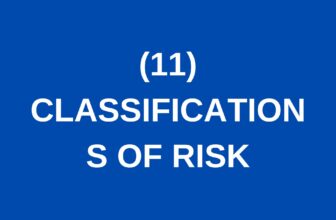8. Comprehensive Guide to Risk Management Tasks (FREE COURSE)
Introduction
Welcome to Chapter 7 of our course on Risk Management. This chapter focuses on the core tasks and functions involved in effective risk management: risk identification, risk analysis, and risk control. As a risk manager, your primary responsibility is to uncover and manage existing or potential threats that could impact your organization.
Risk Identification
Risk identification is the first step in the risk management process. It involves uncovering and listing all possible risks and threats. For instance, consider a supermarket where one of the major risks is shoplifting. Identifying such risks can help in developing strategies to mitigate them.
An example of risk identification in practice is when an insurance company sends a surveyor to inspect a supermarket. The surveyor’s duty is to identify all potential risks and threats. After the inspection, the surveyor provides a detailed report that includes valuable information on the identified risks. While the specifics of these reports are beyond the scope of this course and will be covered in more advanced modules, it is essential to note that they often include recommendations for risk reduction, such as installing CCTV cameras to monitor and deter shoplifters.
Risk Analysis
Once risks are identified, the next step is risk analysis. This involves evaluating the identified risks to understand their potential impact. One effective method for risk analysis is studying loss history.
For example, an insurance company assessing the motor insurance market for drivers under 24 years old might analyze data from the past five years to predict future trends. By examining the frequency and severity of accidents involving young drivers, the company can estimate the likelihood of similar incidents occurring in the future. This predictive analysis helps in making informed decisions about policy terms and premiums.
Risk Control
The final step in the risk management process is risk control. This involves implementing measures to minimize or eliminate the identified risks. There are various strategies for controlling risks, depending on the nature of the threat and the resources available.
Consider a factory that needs to perform a hazardous spray painting task. The factory has two options: outsource the job to a third party, thereby transferring the risk and making it their responsibility, or handle the task internally. When deciding between these options, the risk manager must consider the costs involved. Outsourcing may be expensive, but it could be more economical than dealing with potential worst-case scenarios if the task is performed in-house.
Risk Transfer
In addition to identification, analysis, and control, another crucial aspect of risk management is risk transfer. This is typically achieved through insurance. By transferring the risk to an insurance company, organizations can protect themselves against significant financial losses. This process will be discussed in detail in future chapters, highlighting how it works and its importance in the overall risk management strategy.
Conclusion
To summarize, the risk management process consists of four main tasks:
- Identification of risk
- Analyzing the risk
- Controlling the risk
- Transferring the risk through insurance
Understanding and effectively implementing these steps are vital for any risk manager. This concludes our session on risk management tasks. Should you have any questions, feel free to reach out. I am happy to assist.
Thank you, and see you in the next chapter.





